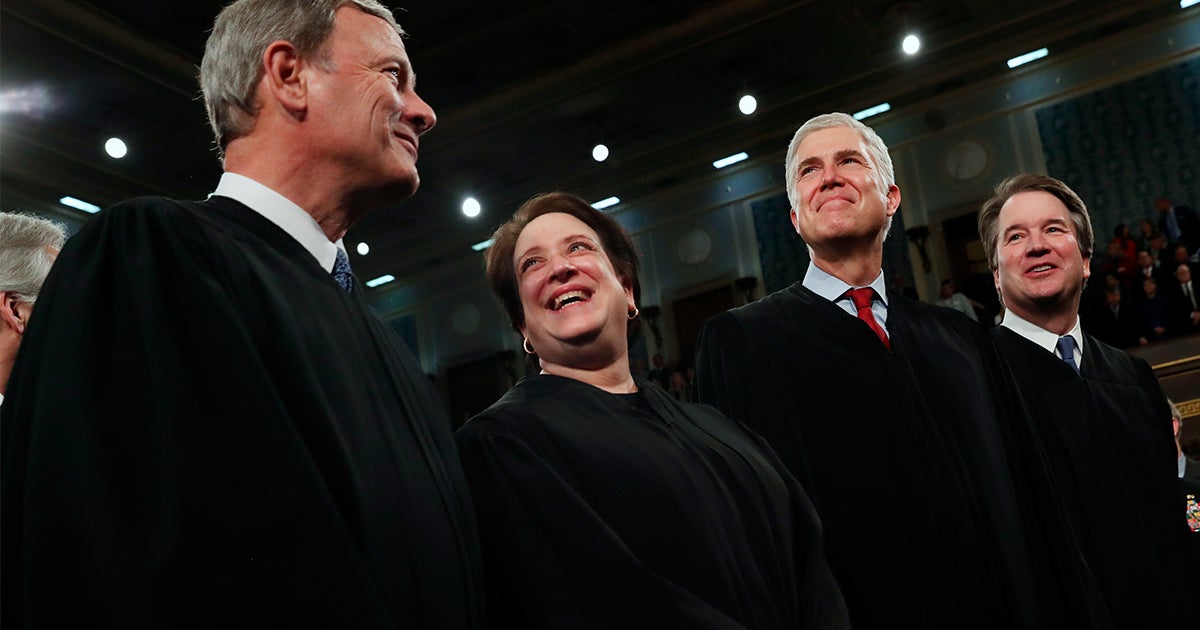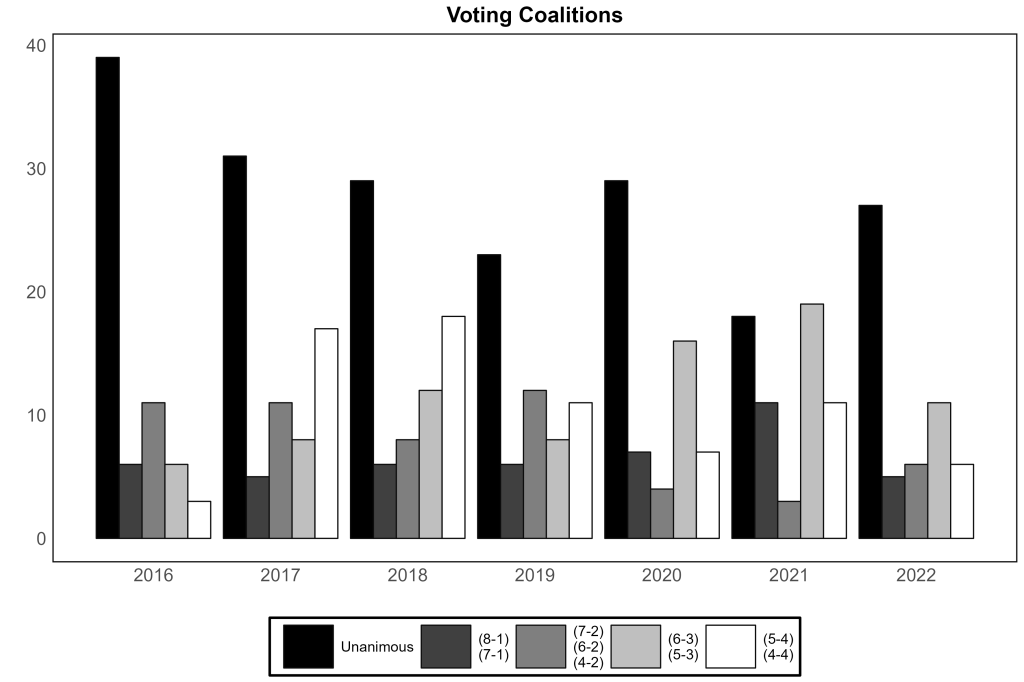
by First Liberty Institute • 6 min read
As part of the brazen Supreme Court Coup, radical groups and politicians claim the nation’s highest court is hyper-partisan and bitterly divided along ideological lines. They use this as an excuse to justify court-packing and other radical proposals. But according to the justices themselves, that is far from the truth.
In a recent Wall Street Journal interview, Justice Samuel Alito defended the Supreme Court from radical attacks. He responded to the attempt by one party in Congress that wants to impose a constitutionally-suspect “code of conduct” on the Court:
“No provision in the Constitution gives them the authority to regulate the Supreme Court—period… I marvel at all the nonsense that has been written about me in the last year. The traditional idea about how judges and justices should behave is they should be mute. But that’s just not happening, and so at a certain point I’ve said to myself, nobody else is going to do this, so I have to defend myself.”
Justice Brett Kavanaugh also pushed back against the false claims that the U.S. Supreme Court has grown increasingly partisan. He said of the Court, “It’s an institution of law, not of politics, not of partisanship.”
“We have lived up, in my estimation, to deciding cases based on law and not based on partisan affiliation and partisanship,” Kavanaugh said at a judicial conference in Minnesota. “We don’t caucus in separate rooms. We don’t meet separately. We’re not sitting on different sides of the aisle at an oral argument… We work as a group of nine.”
He said he was surprised to learn how much time Justices spend with one another, including having lunch together about 65 times a year. He added there’s “a reservoir of good will” among all the members, a congeniality that continues even when members adamantly disagree or have very contrasting judicial philosophies. Last year, Justice Sonia Sotomayor spoke highly of fellow Justice Clarence Thomas, saying, “He is a man who cares deeply about the court as an institution.”
“I suspect I have probably disagreed with him more than with any other justice, that we have not joined each other’s opinions more than anybody else,” she told the American Constitution Society last year. “And yet, Justice Thomas is the one justice in the building that literally knows every employee’s name—every one of them.”
Retired Justice Stephen Breyer, nominated by former President Bill Clinton, defended Justice Thomas as a “man of integrity.”
“As far as I’m concerned, I sat next to him on the bench for 28 years,” Breyer said. “I like him. He’s a friend of mine. I’ve never seen him do anything underhanded or say anything underhanded.”
Judging by the Numbers: Supreme Court is NOT Bitterly Partisan
Data disproves the caricature of the highest Court as broken and divided along partisan lines. In an op-ed for The Federalist Society, First Liberty attorney Mike Berry explains:
“The far left insists the Court is sharply divided along political lines. If that is true, we should expect to see those fissures represented in the Court’s decisions. Yet we find the opposite. This term, 48% of the Court’s decisions were unanimous. That is a significant increase from the 29% of decisions that were unanimous during the 2021 term.”
Dr. Adam Feldman—who runs the statistical blog Empirical SCOTUS—reported there were fewer cases during the most recent term decided on 6-3 ideological splits: five compared with 14 last term. The chart below shows the breakdown of voting coalitions for the Supreme Court since 2016. One pattern is clear: the Court decides cases unanimously far more often than closely divided decisions.

Consider also what happened in 2016, when the Court decided an unusually large number of politically charged cases. More than half were ultimately decided by unanimous votes. In those cases, there were no dissents. Everyone agreed.
In its 2020 term the Court also heard an abnormally large number of controversial issues. It was also the first term after the confirmation of Justice Amy Coney Barrett. Opponents claimed the Court would degenerate into a partisan institution because it would have a solid conservative majority for the first time in nearly a century. But the rate of unanimous, or near unanimous, decisions actually went up.
Even still, radical activist organizations and politicians defy the facts. They claim the Court is bitterly divided, “stolen” or “broken” because of the appointment of the three most recent Justices: Gorsuch, Kavanaugh and Barrett. They often use this falsehood to justify packing the Court with liberal justices.
Court packing—and other radical proposals such as judicial term limits and “ethics” codes— are not the solution because the Supreme Court is not broken. The Supreme Court has had the same number of seats since 1869. It’s had nine members for more than 150 years. Packing the Court will not make it any less partisan or politicized. On the contrary, it will only make the Court more dependent on political or electoral results.
Conservative and liberal justices agree that court-packing is not a good idea. The late Justice Ruth Bader Ginsberg said:
“Nine seems to be a good number. It’s been that way for a long time…I have heard that there are some people on the Democratic side who would like to increase the number of judges. I think that was a bad idea when President Franklin Delano Roosevelt tried to pack the court.”
Similarly, Justice Thomas said court-packing would destroy the institution:
“You can cavalierly talk about packing or stacking the court. You can cavalierly talk about doing this or doing that. At some point the institution is going to be compromised… By doing this, you continue to chip away at the respect of the institutions that the next generation is going to need if they’re going to have civil society.”
Echoing Justice Thomas, retired Justice Stephen Breyer warned: “Well, if one party could do it, I guess another party could do it… On the surface it seems to me you start changing all these things around, and people will lose trust in the court.”
Attacks on justices and the Court are NOT about “restoring balance” or “fixing” the Court. This is the political Left trying to get around decisions it doesn’t like. When a ruling doesn’t go their way—or if they think the Court might rule against them—the Supreme Court Coup and court packing always make a comeback. It’s clear what this is all about: liberal zealots changing the rules and undermining the Court’s authority so they can grab more power.
RELATED NEWS:
The Federalist Society: The Numbers Reveal a United Supreme Court, and a Few Surprises
AP News: Justice Alito says Congress lacks the power to impose an ethics code on the Supreme Court
The Washington Times: Ideological Divide Narrows in Supreme Court Decisions, Compared To Last Year
American Thinker: Subverting the Court